Peers are natural facilitators of language and communication. Bridge School students have frequent opportunities to interact with same age, typically-developing peer partners. Several examples of instructional contexts that foster peer interactions at The Bridge School follow.
Each of our students is included in a regular education classroom for selected subjects. In addition, our students interact with their peers on the playground. These inclusion experiences provide multiple interaction opportunities and enable our students to test out newly-acquired communication skills.
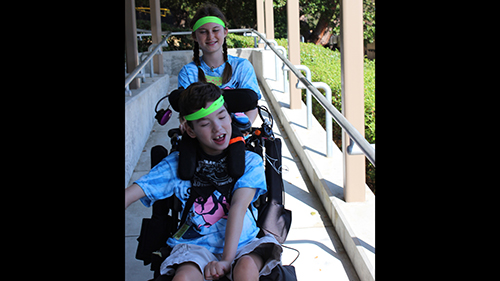

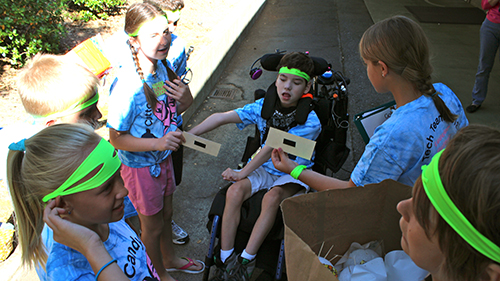

Ability Awareness Presentations are meant to increase other students’ awareness of the competencies, strengths, and educational supports of students with disabilities (Hunt et al, 2009). Bridge School staff provide an ability awareness presentation to students in regular education classrooms each time one of our students is included. This 5-30 minute presentation is designed to:
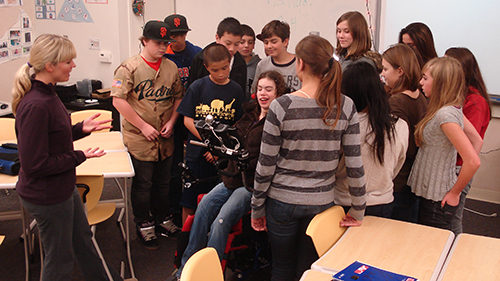
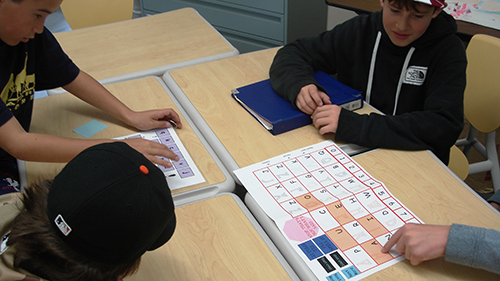
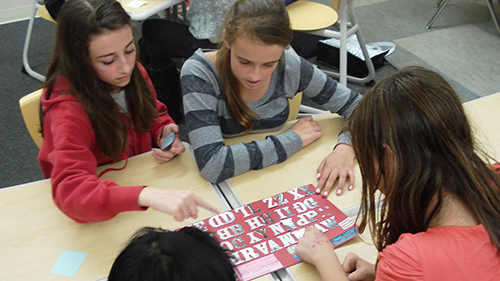
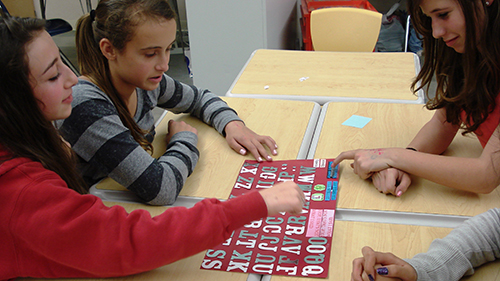
Sample Ability Awareness Presentation [38KB,PDF]
A “Very Important Person” presentation or “Star of the Week” talk is a common elementary school practice. Typically staff select students and ask them to give a short talk to the whole class, sharing things about their personal interests, pets, about their family etc. Sometimes students are asked to bring pictures, favorite toys, and/or make a poster to display for the day or week.
When Bridge School students are selected for this activity, Bridge School staff work with them to compose their talk, program it into a device that enables them to speak, and help them practice giving the talk and answering questions from their classmates. This activity helps build social relationships with peers who may have similar interests.
In this video, a second grade student Jackie gives her VIP talk to her classroom. She uses her SGD to release pre-programmed messages and also composes messages in real-time to answer questions from her peers.
Promoting independence requires the well-coordinated efforts of many, including peers, and the sharing of information among all involved. This includes information regarding the student’s communication modes and tools, other assistive technology devices and tools, interaction strategies and additional accommodations that allow the student to participate more independently. In order to systematically organize this information, we have adapted “The Participation Model”, a tool developed by David Beukelman and Pat Mirenda to increase academic and social participation in inclusive educational environments.
The information shared through the use of this framework can occur through adult modeling during structured activities, during naturally occurring interactive activities, or through direct instruction. As peers demonstrate the ability to interact comfortably and reciprocally with students using AAC, incorporating strategies that allow them to work and play together independently, the adults can step back from direct involvement into a more indirect role. From a distance, the adult can ensure that all students are benefiting from the interaction and meeting their goals. When this is successful, it builds independence and fosters healthy relationships among students.
Check out the module on Promoting Independence in Social Interaction on The Bridge School Course of Study website.
Recess is a time for child-centered play, free-choice activities, and social interactions (Kamps, Kravitz, & Ross, 2002). During each recess period (15 minutes twice daily) our students have opportunities to interact with their classmates and typically-developing peers on the playground, on an accessible play-structure, or inside the Bridge School classroom or the regular education classroom. Sometimes, students from inclusion classrooms invite Bridge School students to play.
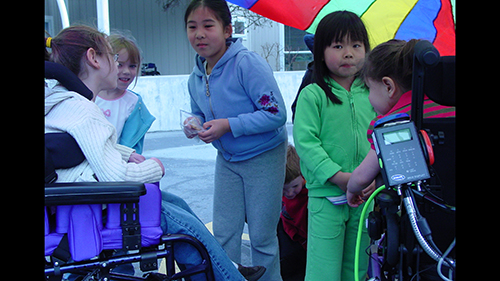

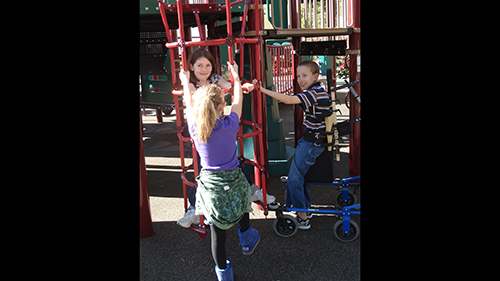

Each year several students from the 5th grade regular education classrooms are chosen to be “5th grade buddies” to our students. Fifth grade buddies learn about different AAC systems and strategies. For example, they learn how each of our students communicate “yes/no/I don’t know”. They also learn how to present choices to students at recess. These key interaction strategies make them feel more confident and skilled during interactions with Bridge School students.
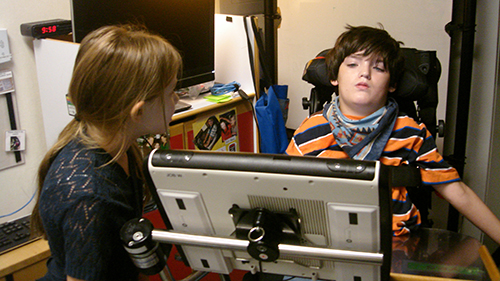
For students who need more structure and direct instruction, Bridge School staff use reverse inclusion programs. One example, is an indoor games group at recess (Kamps, et. al, 2002). This approach requires that staff work with general education classrooms to identify peers who are interested in participating in a games group, program vocabulary for game-playing routines using whole phrases and support role playing for practice, and train peers to allow Bridge students time to respond.
Peer partner attendance should be regular and consistent. At least one peer is needed and up to five is best. An adult should be available to provide support as needed and support should fade over time. Sessions should occur frequently, with a minimum of 10 minutes per activity.
Goldstein, H., Kaczmarek, L., & English, K. (2002). (Eds) Promoting Social Communication: Children with Developmental Disabilities from Birth to adolescence. Volume 10. Maryland: Brookes Publishing Co.
LHunt, P., Doering, K., Maier, J., & Mintz, E. (2009). Strategies to support the development of positive social relationships and friendships for students who use AAC. In Practically Speaking: Language Literacy & Academic Development for students with AAC needs. Gloria, S. & Zangari, C. (Eds.) Maryland: Brookes Publishing Co.
Kamps, D., Kravits, T., & Ross, M. (2002). Social-communicative strategies for school-age children. In Promoting Social Communication: Children with Developmental Disabilities from Birth to adolescence. Volume 10. Goldstein, H., Kaczmarek, L., & English, K. (Eds.) Maryland: Brookes Publishing Co.
McCormick, L. (2003). Language intervention in the inclusive preschool. In Supporting children with communication difficulties in inclusive settings: School-based language intervention. 2nd edition. McCormick, L., Loeb, D.F., Schiefelbusch, R.L. (Eds.). Boston: Allyn and Bacon.